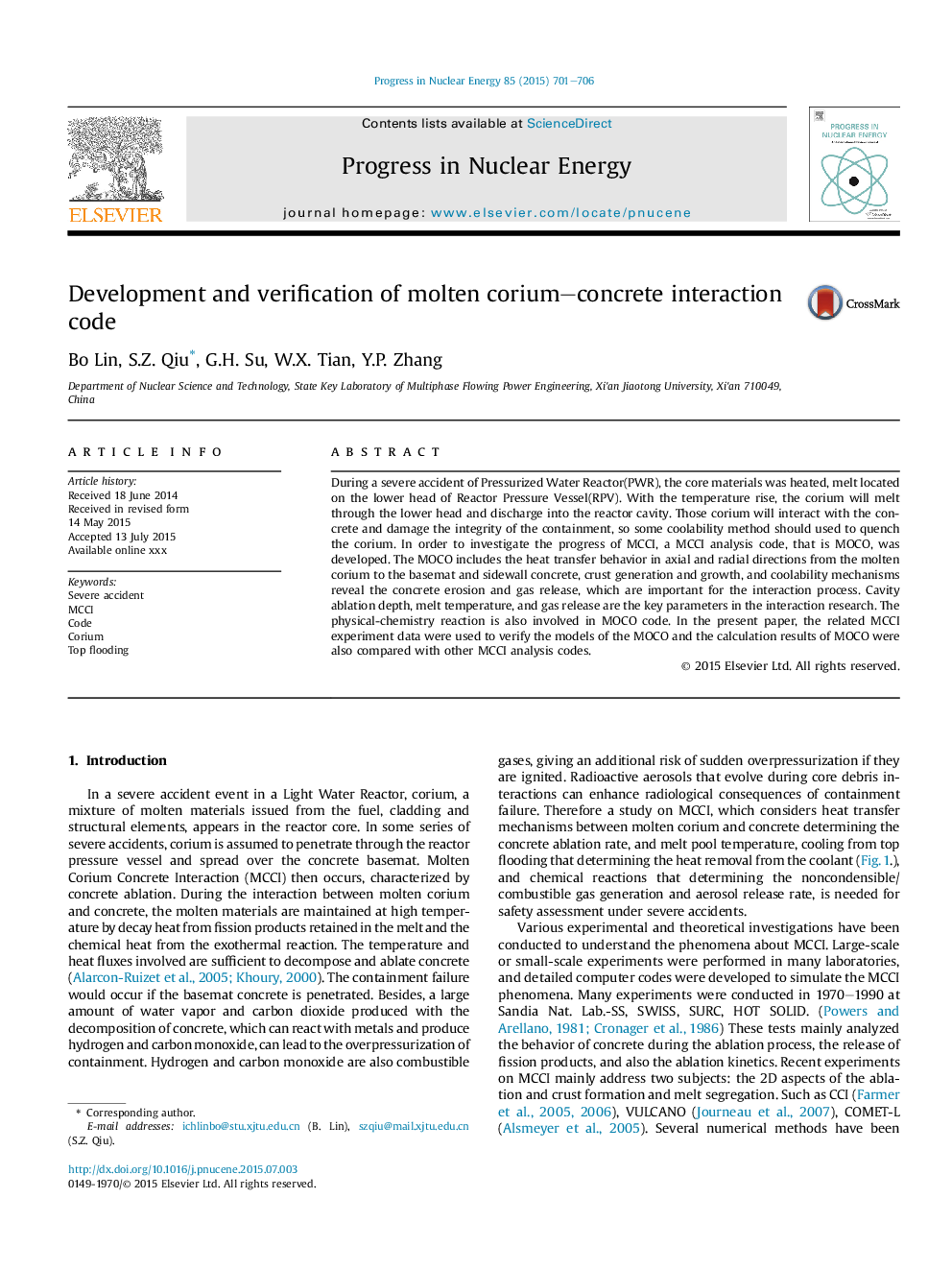| Article ID | Journal | Published Year | Pages | File Type |
|---|---|---|---|---|
| 8085325 | Progress in Nuclear Energy | 2015 | 6 Pages |
Abstract
During a severe accident of Pressurized Water Reactor(PWR), the core materials was heated, melt located on the lower head of Reactor Pressure Vessel(RPV). With the temperature rise, the corium will melt through the lower head and discharge into the reactor cavity. Those corium will interact with the concrete and damage the integrity of the containment, so some coolability method should used to quench the corium. In order to investigate the progress of MCCI, a MCCI analysis code, that is MOCO, was developed. The MOCO includes the heat transfer behavior in axial and radial directions from the molten corium to the basemat and sidewall concrete, crust generation and growth, and coolability mechanisms reveal the concrete erosion and gas release, which are important for the interaction process. Cavity ablation depth, melt temperature, and gas release are the key parameters in the interaction research. The physical-chemistry reaction is also involved in MOCO code. In the present paper, the related MCCI experiment data were used to verify the models of the MOCO and the calculation results of MOCO were also compared with other MCCI analysis codes.
Keywords
Related Topics
Physical Sciences and Engineering
Energy
Energy Engineering and Power Technology
Authors
Bo Lin, S.Z. Qiu, G.H. Su, W.X. Tian, Y.P. Zhang,
